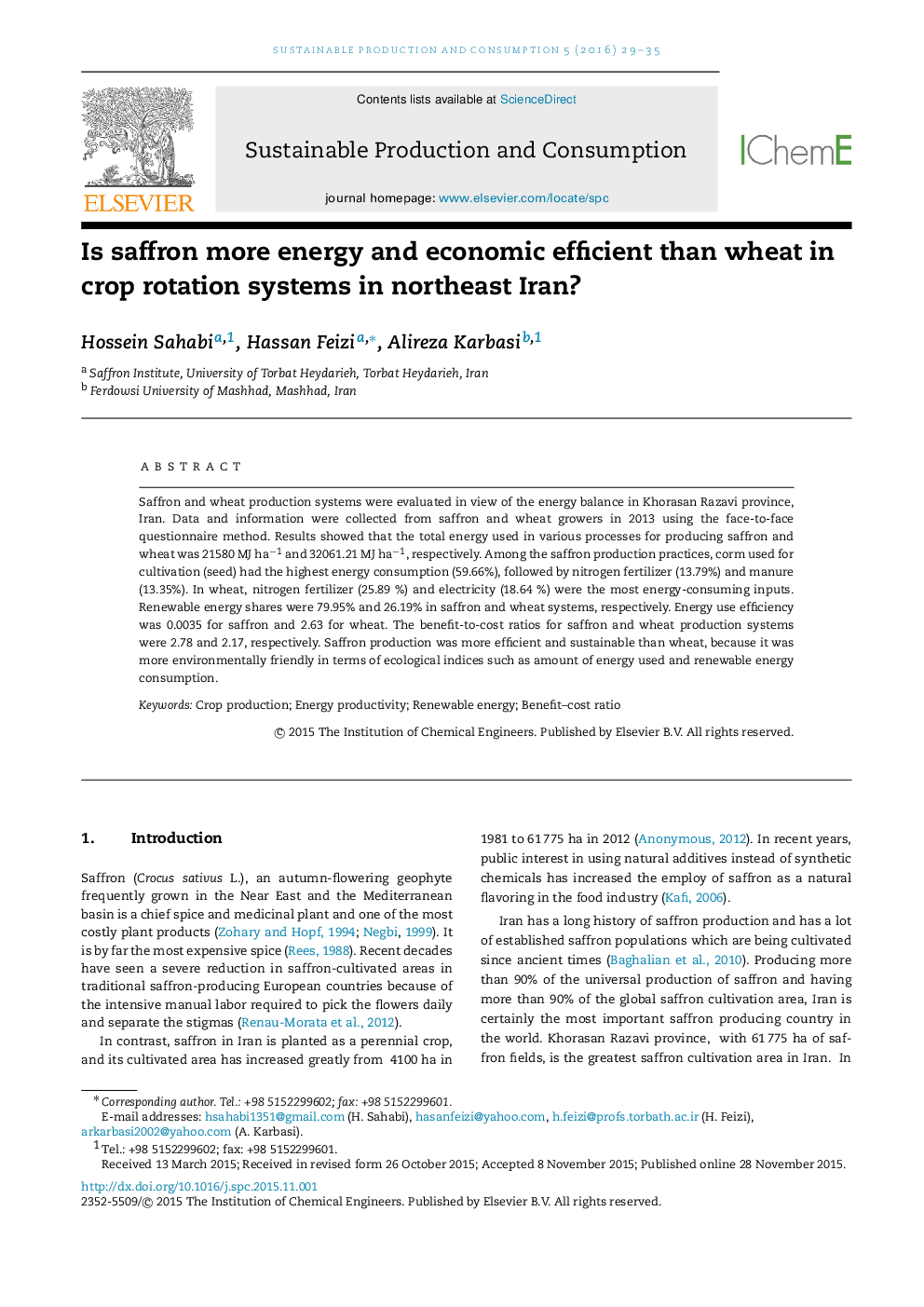| Article ID | Journal | Published Year | Pages | File Type |
|---|---|---|---|---|
| 694284 | Sustainable Production and Consumption | 2016 | 7 Pages |
•Among the saffron production practices, using corm had the highest energy use.•Renewable energy usage in saffron was greater than that of non-renewable energy.•In terms of sustainability, saffron is a healthier system than wheat.•In view of economical indices, saffron is an efficient production system.
Saffron and wheat production systems were evaluated in view of the energy balance in Khorasan Razavi province, Iran. Data and information were collected from saffron and wheat growers in 2013 using the face-to-face questionnaire method. Results showed that the total energy used in various processes for producing saffron and wheat was 21580 MJ ha−1−1 and 32061.21 MJ ha−1−1, respectively. Among the saffron production practices, corm used for cultivation (seed) had the highest energy consumption (59.66%), followed by nitrogen fertilizer (13.79%) and manure (13.35%). In wheat, nitrogen fertilizer (25.89 %) and electricity (18.64 %) were the most energy-consuming inputs. Renewable energy shares were 79.95% and 26.19% in saffron and wheat systems, respectively. Energy use efficiency was 0.0035 for saffron and 2.63 for wheat. The benefit-to-cost ratios for saffron and wheat production systems were 2.78 and 2.17, respectively. Saffron production was more efficient and sustainable than wheat, because it was more environmentally friendly in terms of ecological indices such as amount of energy used and renewable energy consumption.
